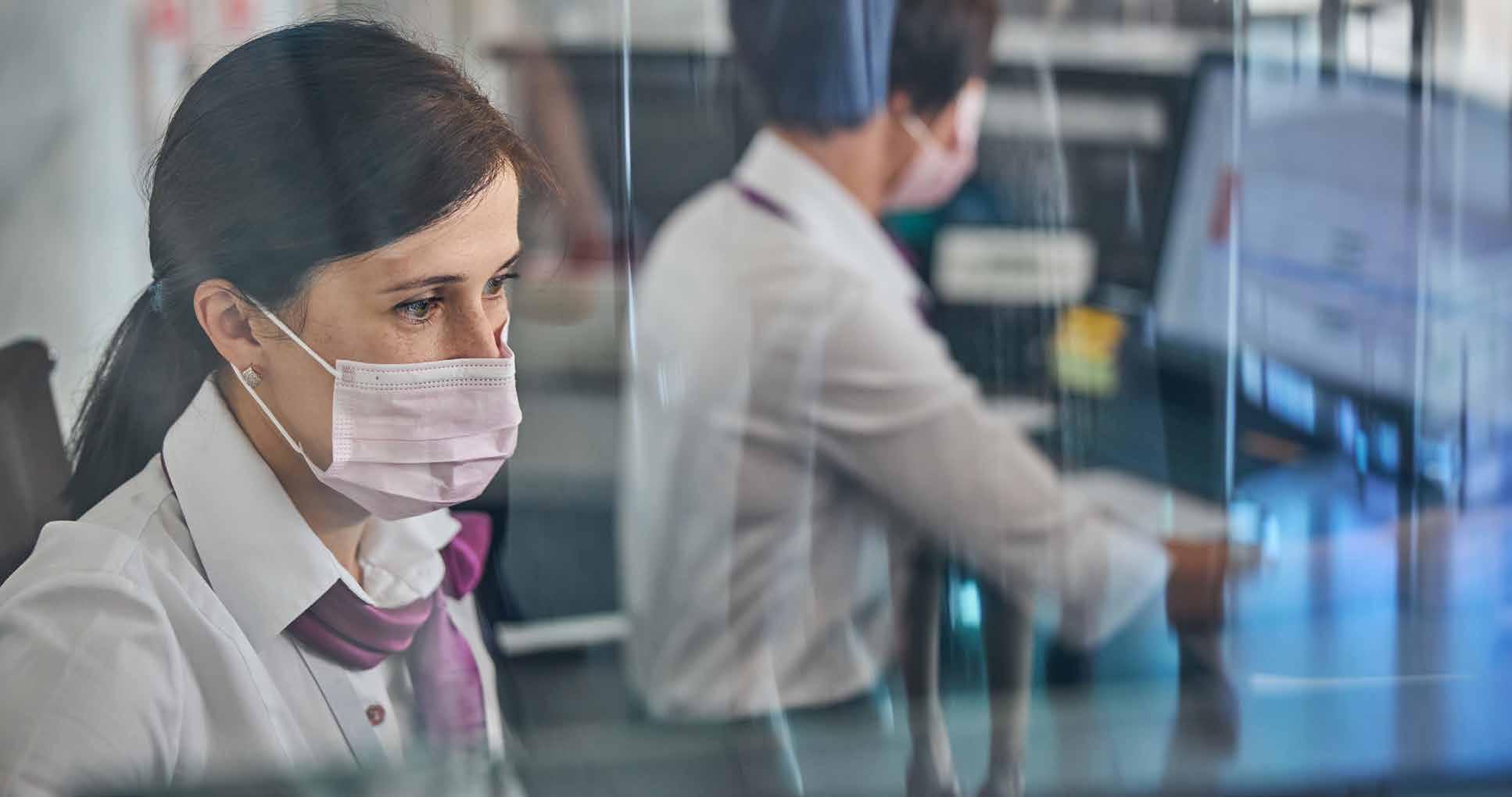
The Essential COVID-19 Safety Guide for your Clinical Practice
The COVID-19 pandemic has transformed the practice of health and beauty, especially the approach to patient and staff safety. As restrictions on many procedures are slowly relaxed, it’s crucial that you are familiar with the strategies to protect your patients and your staff from infection.
Keep your clinic safe and keep your clinic open
Appropriate training of all staff is essential in managing the risk of COVID-19 in your practice. It’s also important to keep in mind the latest insights into the transmission of COVID-19 and the clinical changes for consideration to perform patient treatments in the months and years ahead.
Transmission
The virus is spread primarily by respiratory droplets, whether inhaled directly or following deposition on the mucosa of the nose, eyes or mouth. The virus can be deposited on surfaces or objects in the environment known as fomites, and then transferred to another individual.
Studies indicate that most transmission occurs from close and unprotected exposure. This suggests an important role for direct contact or by contact with fomites in the immediate environment of those with infection.
Fomites can include phones and other digital devices, doorknobs, computer screens, mice and keyboards, desks, counters and other furniture, cash and newspapers and magazines, in addition to medical equipment and devices. Sanitiser dispensers can also carry the virus on their outer surfaces.
Understanding the risks
Many dermatology treatments are undertaken on the head and neck. The face, especially around the nose and mouth, is an area of high risk of exposure through droplets, aerosols, fomite transfer and surface contamination. In addition, procedures often involve close proximity to the patient for a significant duration of 15 minutes or more.
Patient screening
All patients and all staff need to be considered to be both potentially infective and susceptible to infection. The Australasian College of Dermatologists has provided clear guidance on practice management in response to the COVID-19 pandemic.1
Recommendations include providing advice to patients about precautions prior to their arrival at your clinic, including being screened for symptoms, potential exposure to someone with confirmed or suspected infection within the last 14 days, travel from a high-risk area within last 14 days, or the imposition of self-isolation or quarantine.

Practical practices
The pandemic provides a reminder of the need for good clinical practice at all times, regardless of the COVID-19 outbreak, to preserve patient and staff safety.
Practical steps for practice management include:
• Use hand sanitiser on arrival and on entry to the treatment room
• Screen body temperatures with a ‘no touch’ infrared thermometer
• Carefully implement social distancing
• Install perspex screens at the reception desk
• Avoid cash transactions
• Provide easy-clean waiting rooms furniture (no fabric)
• Remove magazines, pamphlets, water cooler
• Use electronic referrals, consent forms and notes
• Encourage patients to avoid use of their mobile phones
• Patients should attend the practice alone unless a guardian or carer is essential
Cleaning and disinfecting
Cleaning and disinfection of all equipment is essential, with special focus on high-touch surfaces. Hand washing and avoiding touching the face are key first steps in avoiding transmission.
Soap and water for at least 20 seconds is recommended for hand washing. Rub hands rather than scrub them to avoid unnecessary skin damage. If soap and water is not practical, alcohol-based sanitisers used for at least 20 seconds can be effective. Ensure that enough is used to provide a good coating of all surfaces, and allow sufficient contact time. Avoid excessively hot water, avoid fragranced products, use alcohol rubs which include moisturisers, and maintain a healthy skin protective layer using moisturisers and barrier creams as needed.
PPE protocol
The effective use of Personal Protective Equipment (PPE) requires education, and clear guidelines are available.2
Eye protection can consist of goggles or a face shield and should be taped in place instead of using elastic straps. It must be handled and cleaned properly and disinfected before re-use or discarded.
Masks need to fit correctly and be removed and disposed of safely.
Gloves must be put on and removed safely and hand hygiene is essential before and after their use, as viruses are able to penetrate them. Latex and nitrile gloves provide greater protection than vinyl gloves.
Caps and masks for patients should be considered for some procedures as hair is a potentially contaminated surface.
Laser generated air contaminants
Exposure to fine particulate matter is a particular concern, as it has been shown that higher levels of air pollution are associated with higher mortality rates from COVID-19.3
In dermatology, exposure to biological aerosols can include the plume from laser therapy or electrocautery, the cryocoolers used in skin treatment, and nitrous oxide delivery systems. The risk of plumes must be considered with all types of laser therapy. Laser generated air contaminants consist of a mixture of toxic gas components, biomicroparticles, dead and living cells, and microorganisms including pathogens.4
Properly fitted surgical masks do provide some protection against laser generated air contaminants and disposable gowns should also be considered for significant aerosol-generating procedures.
Plume scavenging systems which use suction nozzles can reduce exposure to contaminants and air filtering should also be considered. High efficiency particulate air (HEPA) filtration is effective and can be installed in air conditioning or provided in stand-alone units for a single room.
For more detailed clinical information on health and safety in the COVID-19 era for your health and beauty practice, please download the Clinical Insights Whitepaper by Dr John Sullivan, MB BS (Hons1) FACD
DOWNLOAD NOW
References
1. Australasian College of Dermatologists.COVID-19 practice management and operation.
https://www.dermcoll.edu.au/wp-content/uploads/2020/04/Practice-Environment_09042020.pdf
2. Australian and New Zealand Intensive Care Society (2020). ANZICS COVID-19 Guidelines. Melbourne:
ANZICS.
3. Wu X et al. Exposure to air pollution and COVID-19 mortality in the United States. medRxiv
2020.04.05.20054502; doi: https://doi.org/10.1101/2020.04.05.20054502.
4. Lee SJ et al. Respiratory protection for LASER users. Korean Society for Laser Medicine and Surgery
2019; 8: 43-49

